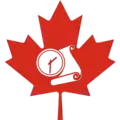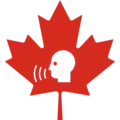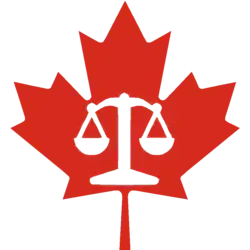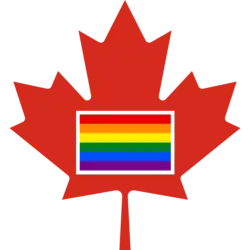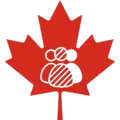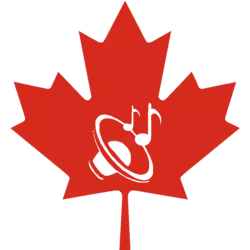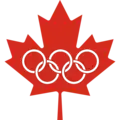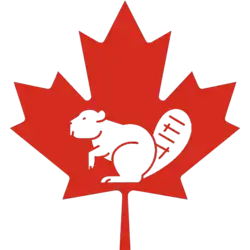Portal:Canada
| Contents | Contributing |
Introduction
Canada is a country in North America. Its ten provinces and three territories extend from the Atlantic Ocean to the Pacific Ocean and northward into the Arctic Ocean, making it the second-largest country by total area, with the longest coastline of any country. Its border with the United States is the longest international land border. The country is characterized by a wide range of both meteorologic and geological regions. With a population of over 41 million, it has widely varying population densities, with the majority residing in its urban areas and large areas being sparsely populated. Canada's capital is Ottawa and its three largest metropolitan areas are Toronto, Montreal, and Vancouver.
A developed country, Canada has a high nominal per capita income globally and its advanced economy ranks among the largest in the world by nominal GDP, relying chiefly upon its abundant natural resources and well-developed international trade networks. Recognized as a middle power, Canada's support for multilateralism and internationalism has been closely related to its foreign relations policies of peacekeeping and aid for developing countries. Canada promotes its domestically shared values through participation in multiple international organizations and forums. (Full article...)
Featured article -
Canada's Walk of Fame (French: Allée des célébrités canadiennes) in Toronto, Ontario, Canada, is a walk of fame that acknowledges the achievements and accomplishments of Canadians who have excelled in their respective fields. It is a series of maple leaf-like stars embedded in 13 designated blocks' worth of sidewalks in Toronto in front of Roy Thomson Hall, The Princess of Wales Theatre, and The Royal Alexandra Theatre on King Street as well as Simcoe Street. (Full article...)
Current events
- August 19, 2025 – 2025 Air Canada flight attendants strike
- Air Canada announces it will gradually restart operations tonight after it reached a tentative agreement with the Canadian Union of Public Employees, which represents the airline's over 10,000 flight attendants. (NPR)
- August 18, 2025 – By-elections to the 45th Canadian Parliament
- Conservative Party of Canada leader Pierre Poilievre is elected in a by-election in Battle River—Crowfoot, and returns to the House of Commons and his role as opposition leader after previously losing re-election during the 2025 Canadian federal election in Carleton. The seat was vacated by Conservative MP Damien Kurek to specifically give Poilievre an opportunity to return to Parliament. (The Globe and Mail)
- August 17, 2025 – 2025 Air Canada flight attendants strike
- Air Canada suspends its plan to resume flights after cabin crew continued a strike despite a Canada Industrial Relations Board order and government-imposed arbitration, leaving operations halted and affecting more than 700 flights and about 130,000 daily passengers. (Philippine Daily Inquirer)
- August 16, 2025 – 2025 Air Canada flight attendants strike
- Canadian jobs minister Patty Hajdu orders binding arbitration between Air Canada and the Canadian Union of Public Employees. (BBC News)
- August 6, 2025 –
- A month-long legionnaires' disease outbreak that started on July 8 in London, Ontario, Canada, ends after 70 cases and three deaths. (CFPL-DT)
- August 1, 2025 – Tariffs in the second Trump administration
- U.S. tariffs on more than 90 countries enter force following a 90-day pause to allow the countries to prepare, including a 35% tariff on some Canadian goods and a 50% tariff on Brazilian goods. (BBC News)
Selected panorama -
National symbol -
The North American beaver (Castor canadensis) is one of two extant beaver species, along with the Eurasian beaver (Castor fiber). It is native to North America and has been introduced in South America (Patagonia) and Europe (primarily Finland and Karelia). The North American beaver is one of the national symbols of Canada and the official state mammal of Oregon and New York. North American (Canadian) beavers are widespread across the continental United States, Canada, southern Alaska, and some parts of northern Mexico. (Full article...)
Selected vital article -
The history of Canada covers the period from the arrival of the Paleo-Indians to North America thousands of years ago to the present day. The lands encompassing present-day Canada have been inhabited for millennia by Indigenous peoples, with distinct trade networks, spiritual beliefs, and styles of social organization. Some of these older civilizations had long faded by the time of the first European arrivals and have been discovered through archeological investigations. (Full article...)
Selected picture -
Featured biography -
Terrance Stanley Fox (July 28, 1958 – June 28, 1981) was a Canadian athlete, humanitarian, and cancer research activist. In 1980, having had one leg amputated due to cancer, he embarked on a cross-Canada run to raise money and awareness for cancer research. The annual Terry Fox Run, first held in 1981, has grown to involve millions of participants in over 60 countries and is the world's largest one-day fundraiser for cancer research; over C$900 million has been raised in his name through the Terry Fox Research Institute as of September 2024. (Full article...)
Did you know -

- ... that the relative rarity of the radiodont Titanokorys (video featured) in Marble Canyon suggests that the deposits in which it was found may represent the outermost edge of its distribution in life?
- ... that Canadian heritage minister Pascale St-Onge was the bassist in an all-lesbian alternative rock quartet?
- ... that a year after becoming the first woman president of the Canadian Political Science Association, Caroline Andrew moderated the first Canadian leaders' debate on women's issues?
- ... that in 2020 when Persian-Canadian countertenor Cameron Shahbazi performed in Written on Skin in Cologne, his "Luciferian charm" and "iridescent voice" were noted?
- ... that the literary heritage of Nova Scotia includes the first newspaper and the first literary journal in Canada?
- ... that during combat, the Canadian-designed SW1C radar failed to find not only its U-boat target, but also an iceberg near the ship?
- ... that Ron Tiavaasue was born in Samoa, grew up in New Zealand, played college football in the United States, and now plays professional football in Canada?
Featured list -
The 400-series highways are a network of controlled-access highways in the Canadian province of Ontario, forming a special subset of the provincial highway system. They are analogous to the Interstate Highway System in the United States or the Autoroute system of neighbouring Quebec, and are regulated by the Ministry of Transportation of Ontario (MTO). The 400-series designations were introduced in 1952, although Ontario had been constructing divided highways for two decades prior. Initially, only Highways 400, 401 and 402 were numbered; other designations followed in the subsequent decades. To this day, not all controlled-access highways in Ontario are a part of the 400-series highway network. The network is situated almost entirely in Southern Ontario, although Highway 400 extends into the more remote northern portion of the province. (Full article...)
Canadian content search
Associated Wikimedia
The following Wikimedia Foundation sister projects provide more on this subject:
-
Commons
Free media repository -
Wikibooks
Free textbooks and manuals -
Wikidata
Free knowledge base -
Wikinews
Free-content news -
Wikiquote
Collection of quotations -
Wikisource
Free-content library -
Wikiversity
Free learning tools -
Wikivoyage
Free travel guide -
Wiktionary
Dictionary and thesaurus
.svg.png)


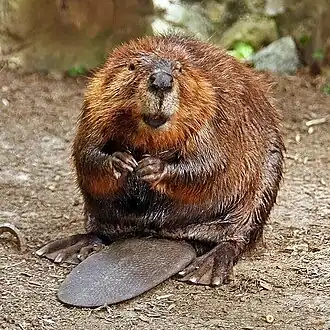

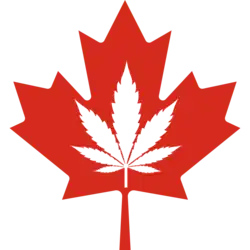
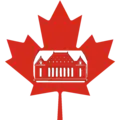
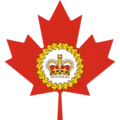

.png)
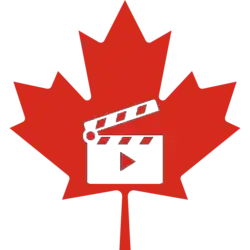
.png)
